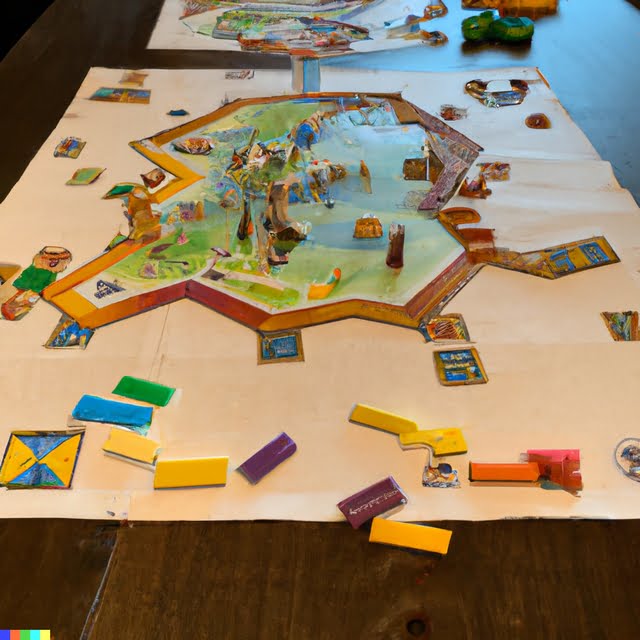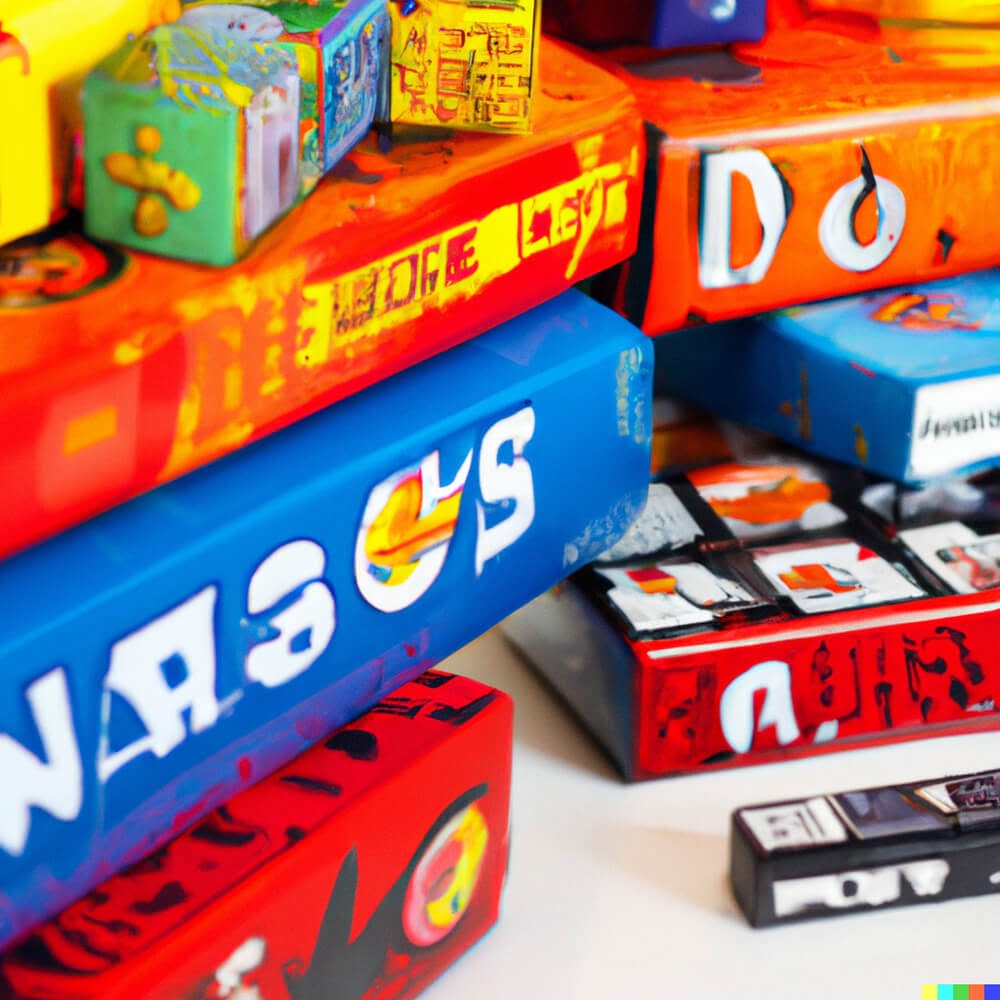Introduction
Games have been around for centuries. From the earliest recorded evidence of such activities, humans have been challenged with opportunities to use their skills to entertain and amass knowledge in a fun way. Board games have been central components of this entertainment since they were first invented thousands of years ago, emerging independently in several different cultures around the world. The timeline of the global spread of these beloved pastimes remains largely elusive, but it’s clear that board games can be found on virtually every continent.
It’s theorized that some of the oldest board games ever made originated in ancient Egypt and dates back nearly 5000 years ago. One well-known game is Senet, which was a game played much like modern day backgammon or draughts. It involved 30 squares connected by pathways signifying dangerous roads and hallowed places usually depicted in hieroglyphs etched onto small boards made from stone or clay. Parts found from other original ancient Egyptian game sets have also surfaced from archaeological digs using both small hardwood boards as well as uneven ivory pyramids to indicate players’ current positions on the board.
The earliest form of modern famous board games such as chess and go began to emerge during early dynasties in India and China during 1000 B.C.. It is believed these two countries may be home to the first versiones that influenced further development of these two games over time, though they were likely modified along the way through different societies near and far throughout Europe, Middle East, Central Asia and East Africa where they remain incredibly popular even today.
In more recent history, board games became increasingly widespread due to colonization between 1500-1800s when European explorers took their traditional imports with them on ships throughout North America, South America, Australia and New Zealand quickly introducing new countries to the collection of beloved indoor pursuits we still enjoy regularly today. Expanded trade routes also helped popularize familiar titles Chinese checkers, mahjongg from Asian locations renewed popularity worldwide with versions adapted for western markets continuing expand our array gaming options significantly.
The Ancient Origins of Board Games in Egypt and Mesopotamia
The earliest known board game is Senet, a game believed to have originated in ancient Egypt and Mesopotamia some 5,000 years ago. One of the oldest board games ever, archaeological records show that these races were popular among both the upper and lower classes during the time, with many noblemen and wealthy merchants taking part in “ceremonial” competitions. From here on out board games continued to proliferate in ancient civilizations all around the world becoming highly popular in Ancient China as well as India by 500 BC.
Throughout the Middle Ages they continued being widespread particularly between European countries like England, France and Italy where they were frequently played among local population. In fact there are claims that King Charles V banned chess ” or at least its public play ” at one point of his reign due to its overwhelming popularity! The 20th century brought out mass production techniques making board games much more accessible for people everywhere. War based board games such as Risk and Stratego as well as strategic ones such as Ludo also became increasingly popular and are still enjoyed by people around the world today.
The Development of Board Games in Ancient Greece, Rome and China
Board games have been a popular source of entertainment since ancient times, quickly spreading around the world through trade and movement. Board games first began to appear in ancient Greece during the 6th century B.C., with the earliest known game being Senet – a two-player race where each player moved pieces or markers called ‘meeples’ from one end of the board to the other. From there, board games spread to Rome and China before eventually reaching most global cultures.
In Ancient Greece, board game playing was highly valued and an important part of daily life. Plato wrote in his Symposium that “board games are more valuable than any other kind of learning because they combine pleasure with instruction”. This sentiment was mirrored by the Romans who extensively developed many strategic war-like board games such as Ludus Latrunculorum which involved moving counters around a chequered board to capture your opponent’s pieces or engage them in battle.
In Ancient China, board games were also used for social and educational purposes and were a regular pastime amongst families. The two most popular Chinese strategy board games were Go (or Wei qi) and Mah Jongg. Both these games required players to gain control over their opponents by positioning their pieces strategically on a grid or race track-shaped table respectively – much like many modern day strategy board games in existence today.
It is thanks to the Greeks, Romans and Chinese that we still enjoy these popular traditional forms of entertainment today! By incorporating rules, mathematics, sequential play and strategy – they provided us with hours upon hours of pleasure! Through global trade networks established in previous centuries, these initial forms of tabletop pastimes soon spread far beyond their origin countries all across Europe, Asia and beyond – allowing almost every culture today to enjoy them in some form or another!
The Arrival of Board Games to Europe During the Middle Ages
The introduction of board games to Europe during the Middle Ages was greatly aided by the Crusaders. After returning home from their conquests in the Holy Land, these knights and warriors brought back many new board games which had originated in Asia and the Middle East. These games included chess, a precursor of checkers, as well as other dice-based games.
By far, the most popular among them was chess which quickly grew to become one of the most widely played strategy games in all of Europe. There are even records showing that it was adopted by numerous lords and kings who would hold tournaments and offer prizes to successful competitors.
The rapid spread of chess through Europe meant that it wasn’t just the wealthy playing it anymore; people from all walks of life were able to join in on the fun at an affordable price. In addition, merchants began trading these boards with rulers and citizens who actively sought them out. Eventually, these board games made it into other parts of Europe such as Germany, France, and Holland during this era.
Thanks to its popularity amongst aristocrats, soon different variants of these classic board games started springing up including Tarot Cards which were being used for divination purposes. The spread of such innovative games didn’t stop there though: traders from Spain carried them thence all over America with missionaries introducing some of these pastimes even to distant lands like China where I Ching is thought to have originated sometime after 1644 AD with pirate ships also contributing their part in taking these beloved favourites to places like India along their barbarian routes on high seas!
Board Games’ Growing Popularity Across Asia and Africa
Board games have been a part of human culture for thousands of years, with archaeological evidence indicating that board games were first played in Egypt as far back as 3500 B.C. By the 16th century, they had already become popular across Europe and were brought to North America by English settlers.
In recent decades, their popularity has grown in Asia and Africa as well. In countries such as China and India, checkers, chess and go are particularly popular table games. As rising incomes have made it possible for more people to purchase board games, there has been a surge in demand for them across the region.
This growth has been helped by various international tournaments which attract large crowds from around the world to witness elite players challenge each other at games like Go and Mah Jongg. Cross-border competitions have also aided the global spread of these classic board games”South Koreans regularly compete against players from Japan and China in various tournaments.
Meanwhile efforts are also being made to introduce board games to younger generations through schools in countries like South Africa”where initiatives such as Go@School help educate children about basic game strategies while teaching valuable life skills like determination and resilience. Such programs hope to help young students rekindle the interest lost in previous generations due to technological advancement. Furthermore, mobile technology is bringing multiplayer competition into this passionate pursuit while playing with physical components”thereby ensuring that today’s generation continues enjoying classical pastimes even as they advance technology further.
19th Century Board Games in Europe and North America
By the 19th century, board games had started to become popular in Europe and North America. These board games typically took the form of abstract strategy, race, or battle-based games. These were usually played on a checkerboard-style game board with pieces representing soldiers, heroes, and other characters from local stories or cultures. Popular examples of this style of game included chess and checkers.
In certain areas, real-world experiences such as tradesman’s rights and financial management were also simulated by abstracted pieces or some combination of cards and dice. Some countries created their own versions of board games that reflected specific local experiences and mythologies ” for example, Korea’s popular yut nori (a race game).
The 19th century was also when manufacturers began to produce more sophisticated boards and components for board games that could be mass-produced for a larger audience than just friends and family. And at the same time, transportation technological advancements meant that people could now find new opportunities to travel throughout the world with relative ease ” which led to greater sharing of ideas as different cultures interacted. As such, it was during this period that grid-style boardgames started to spread around the world.
20th Century Board Games and the Globalization of the Industry
The globalization of board game production and consumption was a process that occurred in the 20th century. Initially, most board games were simple and familiar with the same mechanics of play appearing in different countries. Countries like Germany had been producing many complex add-on exercises since the 19th century while still allowing people to enjoy classic board games like Chess or Backgammon. A period of intense innovation in Europe soon followed, with companies such as Ravensburger and Horn Abbot creating exciting new games with detailed pieces, varied rules and thrilling stories for players.
The increased complexity of these games appealed to the mass market and spurred the growth of a global industry around mid-century. Companies from Britain, Scotland, France, Finland and more began using modern printing techniques to share their ideas and products with each other across cultural boundaries. This led to an era of heavily marketed boardgame releases from all over the world ” from Tolkien’s Lord of The Rings adaptation to Monopoly to Risk ” that capitalized on newly popular entertainment trends. Furthermore, large stores began selling both localized editions alongside international versions in order to cater to growing demands for different types of titles across countries.
Aside from physical copies being available online or at local stores, our digital age has opened up even more opportunity for gamers around the globe to access global markets through services like Steam or Google Play Games which allow anyone anywhere with an internet connection to purchase boardgames they might not be able to obtain otherwise. Boardgames have come a long way from their roots around campfires having extended far beyond their native countries reach. With hundreds of years having passed since their inception, today’s players can enjoy all sorts of variety worldwide thanks in part too quickly expanding distribution networks all brought together by technology advances over time!
Modern Trends in Board Games
Board games have been popular for centuries and even millennia, but they began to spread across the world in earnest during the 19th century. This was due in part to world exploration and colonization as Europeans brought their favorite games with them to new places. As roads and trade routes opened up, new regions got to experience different types of board games, embracing or adapting them as they saw fit.
In the centuries that followed, board games developed all sorts of interesting trends as people from different cultures created their own versions, often modifying existing rules or coming up with something entirely new. Adaptations and translations of classic titles meant that game businesses flourished in the early 20th century when whole families gathered around the table for a fun evening activity.
Today the popularity of board games continues more than ever before. Technology has played a huge role; from apps that teach you how to play intriguing strategy titles to online gaming sites that simulate your favorite game experiences which you can now join from anywhere in the world. Furthermore, ‘esports’ events have gained tons of traction in recent years, allowing players of all levels to take part in huge tournaments such as PAX Unplugged and participate in professional competitions broadcast on TV networks like ESPN. Board gaming continues to evolve with each passing year!
Conclusion
Board games have been popular since ancient times. Ancient Egyptians were fond of a game called “Senet” and the Chinese have played Go for centuries. Other early board games include the Royal Game of Ur, Nine Men’s Morris, and Chess. The National Library of France holds a record of over 200 original board game rules written by French noblemen between 1680-1700, which shows the immense popularity of these games in Europe at that time.
Through colonialism, trade, and increased global travel, these ancient board games spread around the world in the late 18th century and beyond. As technological advances made it easier to produce mass-market boardgames in the 19th century, they became available to many people from different backgrounds who might not otherwise have access to them. The 20th century saw an incredible rise in gaming technology; there are now electronic games and simulations that people around the world can play on a variety of platforms.
Today, board games remain a popular form of entertainment for people all over the planet. They can be found both online and played in traditional board game cafes or stores. Despite their age, these classic forms of gaming continue to bring friends and family together for some good old fashioned fun. As long as there are people willing to challenge each other with strategies derived from centuries ago, this hobby will never go out of style ” no matter where you live!

I love playing all kinds of games – from classics like Monopoly to modern favourites like Ticket to Ride.
I created this blog as a way to share my love of board games with others, and provide information on the latest releases and news in the industry.





